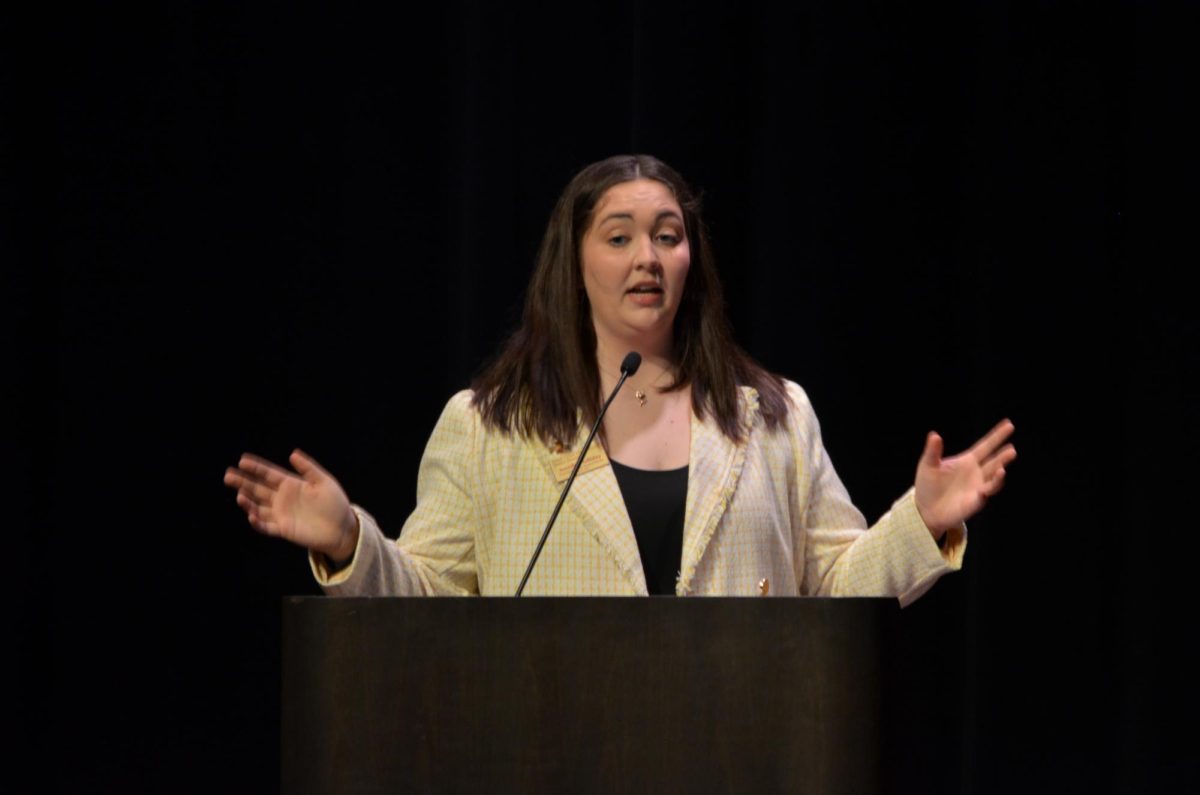Health professionals say American beauty standards can lead to health concerns
The billion-dollar beauty industry may contribute to the rise in eating disorders among women, according to eatingdisorderhope.com.
April 12, 2020
The beauty industry makes blush, foundation, mascara and lipstick to cover blemishes and rumored imperfections, but doing so can also cause problems, according to eatingdisorderhope.com
“We are not the same,” according to eatingdisorderhope.com. “Women, especially, range dramatically in size, shape and appearance.”
Beauty mogul L’Oréal made $33.26 billion in product sales, according to their 2019 annual report. Kylie Cosmetics, owned by billionaire Kylie Jenner, is worth an estimated $900 million, according to Forbes.
Due to makeup being perceived as a necessity, these brands have an influence that expands beyond facial features. This raises the concern of what role they play in the way women and young girls are presented expectations of beauty and what to be, even in a structural sense, according to the video series “Killing Us Softly.”
The 1995 award-winning video “Slim Hopes” offers an in-depth analysis of the depiction of female bodies in over 150 real-world advertising and marketing images and the effects they have upon women’s health in relation to eating disorders, like anorexia and bulimia or binge eating, and the relationship females face with dieting and thinness and its expectations. “Slim Hopes” explores the disconnect between fantasy and reality and how hard it is to differentiate when examining the ways in which the beauty industry presents unrealistic female archetypes, which can influence young children and women throughout life with relation to their size and consumption patterns, according to Kanopy’s synopsis.
Beauty standards like those presented in “Slim Hopes” can lead to a variety of health concerns, like anorexia, bulimia and other eating disorders, according to eatingdisorderhope.com.
Anorexia Nervosa is a psychological and potentially life-threatening eating disorder, which is a fixation with a thin figure and abnormal eating patterns referring to self-starvation and lack of appetite, according to eatingdisorderhope.com.
Bulimia Nervosa is a psychological and severe life-threatening eating disorder described by the ingestion of an abnormally large amount of food in a short time period, followed by an attempt to avoid gaining weight by purging with forced vomiting, excessive use of laxatives or diuretics and extreme or prolonged periods of exercising to expel what was consumed, according to eatingdisorderhope.com.
Binge-eating is commonly known as compulsive overeating, or consuming abnormal amounts of food while feeling unable to stop and a loss of control. It often leads to the development of unwanted weight gain or obesity, which can indirectly reinforce further compulsive eating using food to cope, according to eatingdisorderhope.com.
“The statistics from Student Counseling Services from January to March 31 [show that] 6.61 percent of students coming into the center for services disclosed some form of an eating disorder,” said Michelle Roling, certified eating disorder specialist through the International Association of Eating Disorder Professionals employed with the Student Counseling Service Center at Iowa State and a co-founder of the Eating Disorder Coalition of Iowa. “Statistically, this is in line with national numbers, demonstrating that 10 percent of college students struggle with some form of diagnosable eating disorder. The more alarming and lesser-known reality is that 40 to 60 percent of those college-aged and older struggle with some form of disordered eating, where their relationship with food is a challenge.”
Largely contributing to the thin trend originating in 2014 was the international usage of waist trainers designed to slim the waistline instantly and supplement fitness goals, which are similar to that of corsets, historically used in the mid-1800s but as early on as 1550, according to omgwaisttrainer.com.
On the other end, society has recently seen popularity in body positivity, thanks in part to efforts by stars such as singer Lizzo, model Iskra Lawrence and actress Lena Dunham, according to verywellmind.com.
The efforts of the body positive movement is to address unrealistic beauty standards and to build the confidence of oneself and others regardless of the physical body, whether that’s with makeup, special clothes like SKIMS or au natural. It is a movement for acceptance for each person as they come or are comfortable with including all genders, according to thebodypositive.org.
Iowa State offers online mental health screenings to assist individuals in getting help for a range of issues, including eating related disorders. There are a number of resources available for students struggling, including the Student Counseling Center, Thielen Student Health Center, the crisis text line available by texting “ISU” to 741741, the Eating Disorder Coalition of Iowa and the National Eating Disorders Association.
“There is always hope,” Roling said. “Regardless of how long someone has been struggling, recovery is a reality and is worth the hard work to move beyond the struggle.”

















